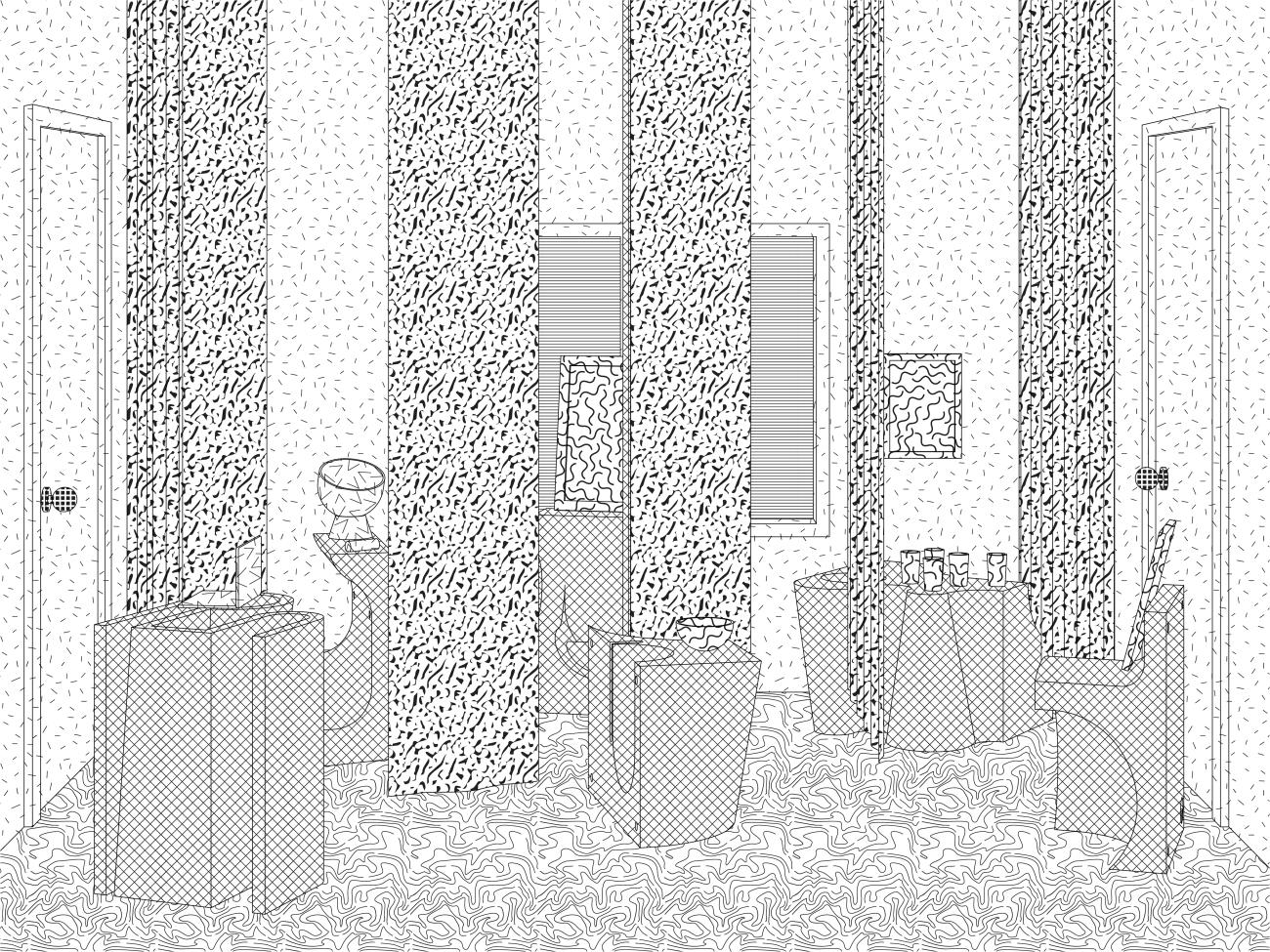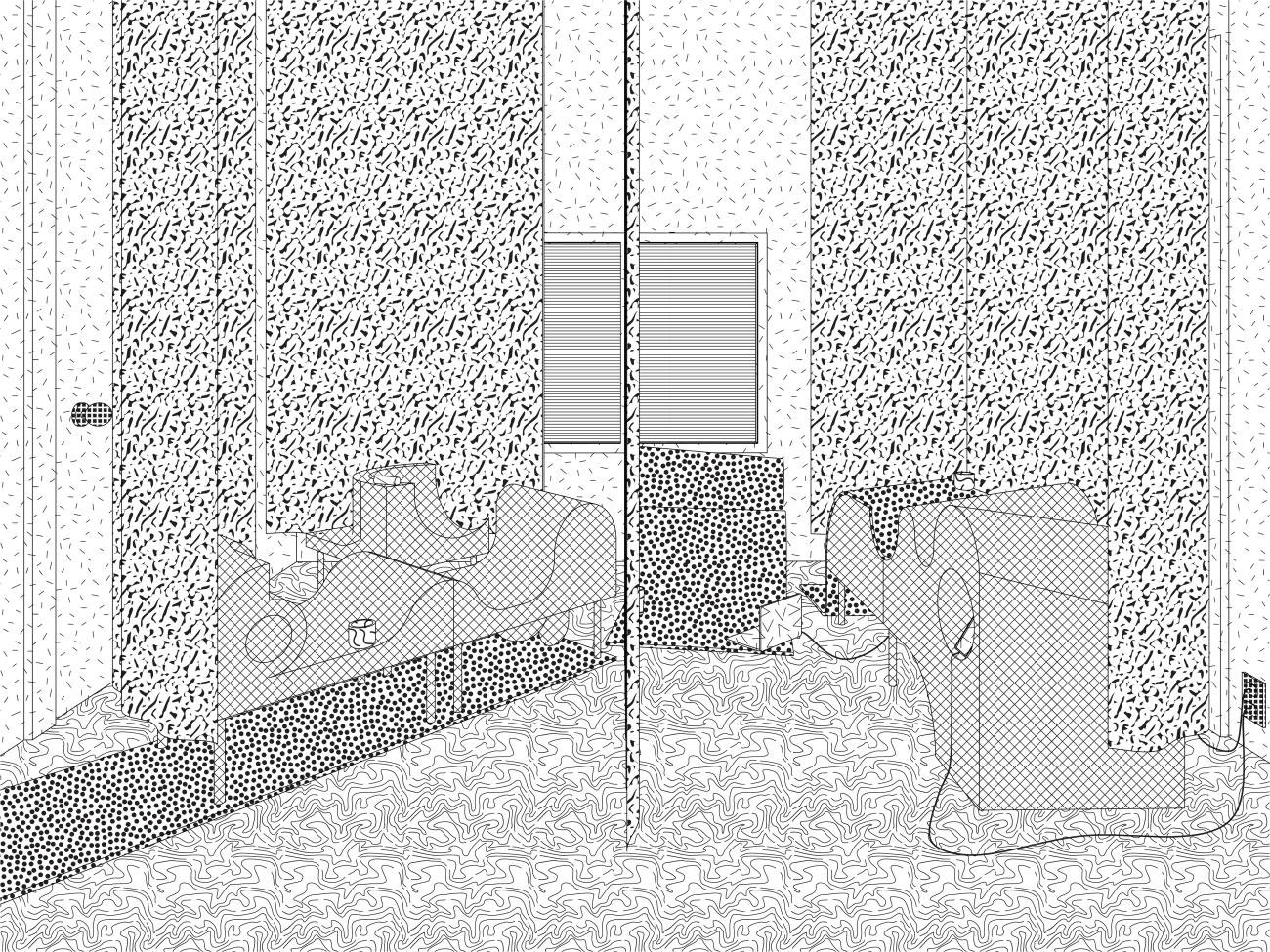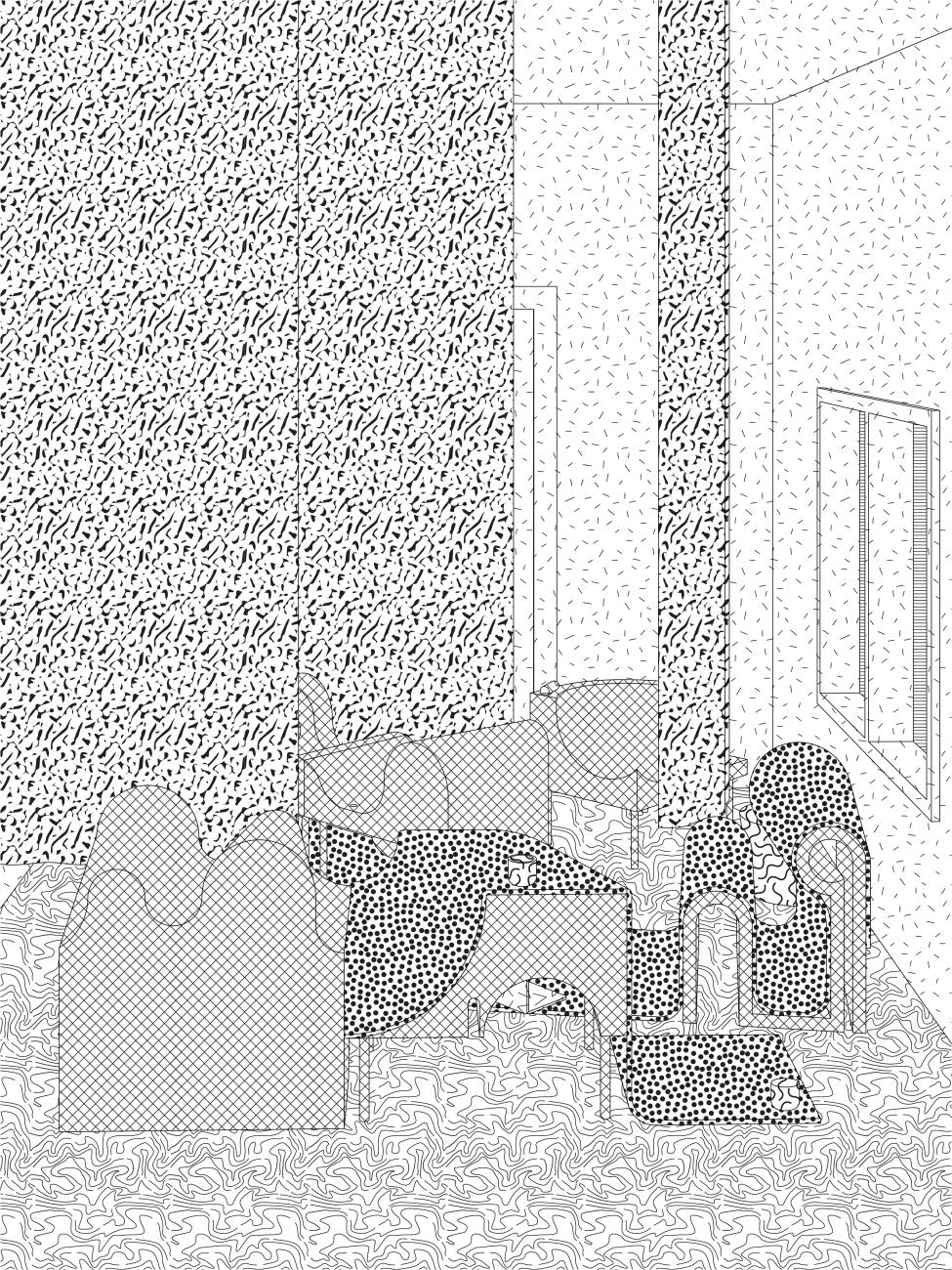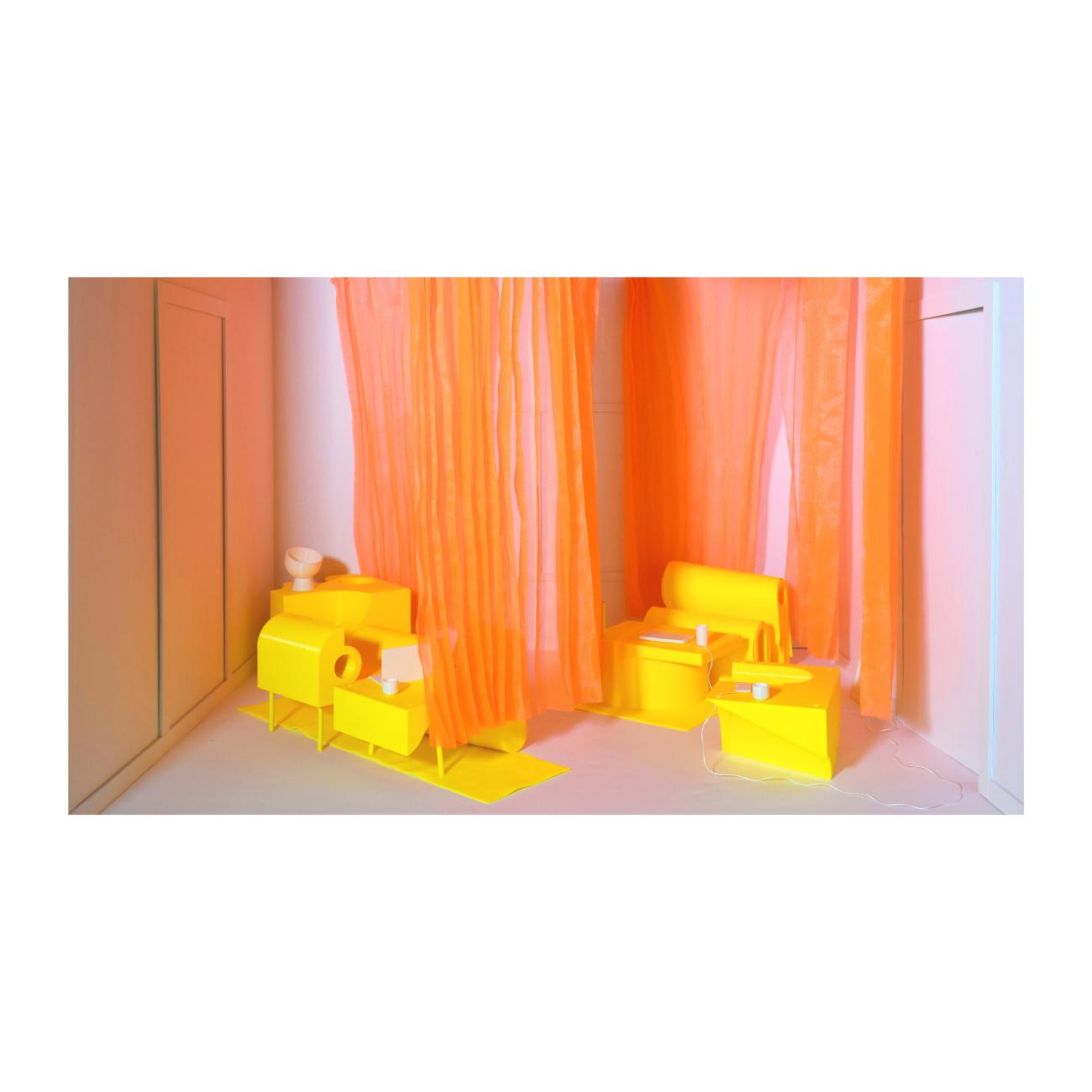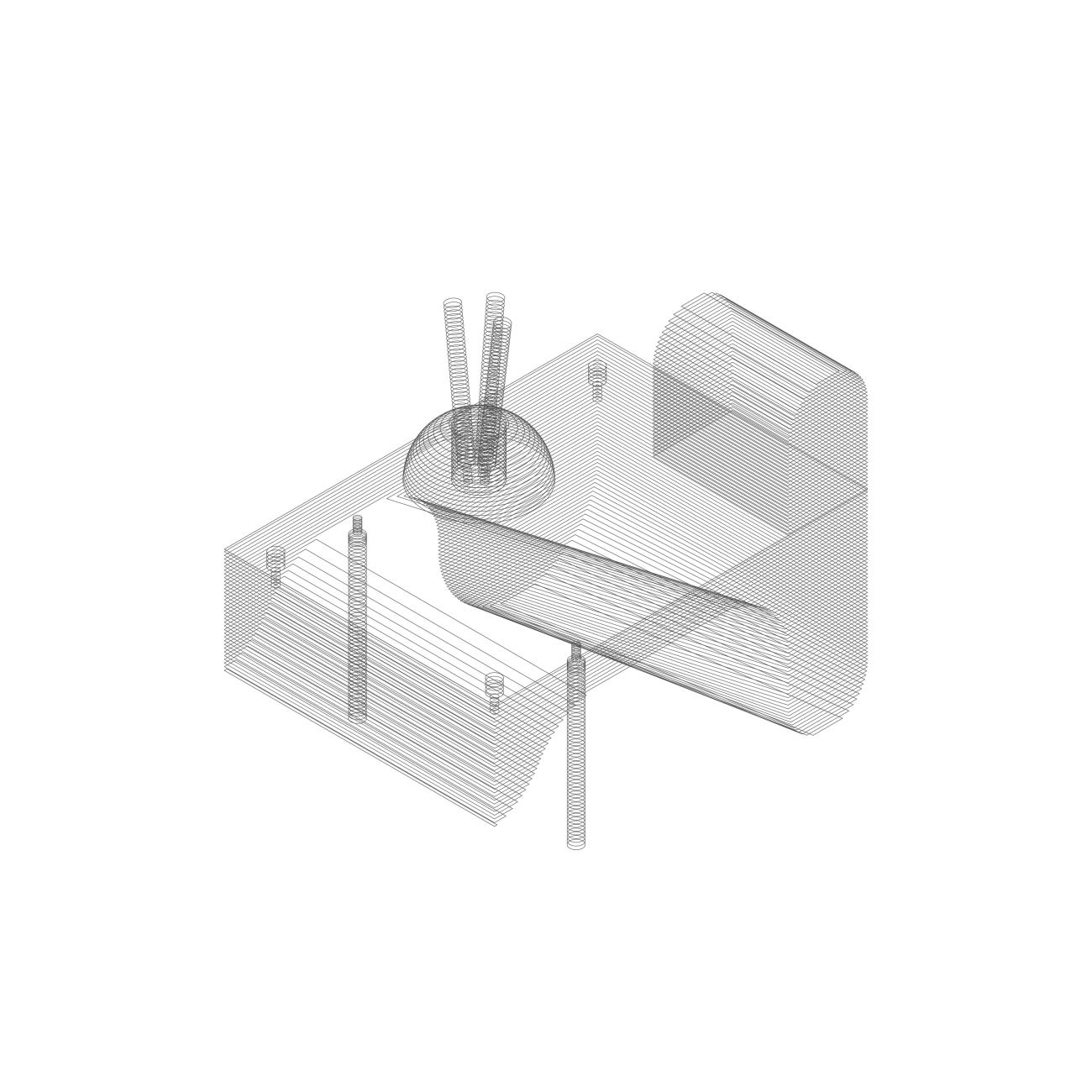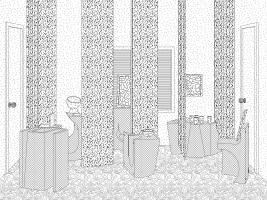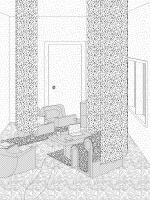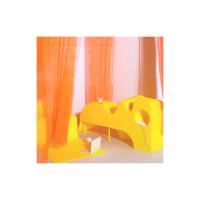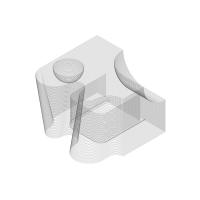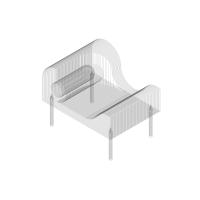This thesis is a reevaluation of the status of the contemporary living room through a critical analysis of type, an embrace of stereotype, and the presentation of a prototype that uses the domestic image as its main site of inquiry. It is a space of management and mediation between the exterior and the interior, adhering to specific protocols. The room fails typification through the standards of efficiency, function, and the specificity of any given program.
While serving many needs, as indicated by the plethora of names assigned to this room --- drawing room, parlor, salon, sitting room --- it has been regarded as serving none at all. As an architectural type, it fails to produce quantifiable data that allows for its reification through normalization. This reading of “uselessness,” however, falls into the all too pervasive categorization of domestic space as specifically functional in relation to physiological need, as a “machine for living in,” continuing the modern paradigm. However, if current practices in this room are taken as evidence, the Living Room exists as a public space within the private sphere, and as a place where the domestic and public meet. While the project presents a living room prototype as a culmination of research and analysis, and finds the living room an especially rich domestic type for investigation, the thesis itself is a methodology of typal evaluation. Rather than a singular, one-size-fits-all prototype as a design solution, the project advocates for a critical analysis (and, possibly, rejection) of precedent, embrace of “lower” knowledge forms, and the implementation of contemporary fabrication techniques in order to produce a contemporary domestic image. The project proposes strategies for gaining aesthetic control over fabrication and representational tools in service of rereading domestic architectural types.
Close
Sam Schuermann
2019


